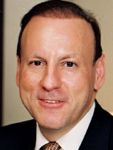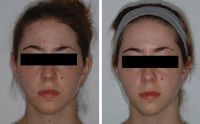- General Dermatology
- Eczema
- Chronic Hand Eczema
- Alopecia
- Aesthetics
- Vitiligo
- COVID-19
- Actinic Keratosis
- Precision Medicine and Biologics
- Rare Disease
- Wound Care
- Rosacea
- Psoriasis
- Psoriatic Arthritis
- Atopic Dermatitis
- Melasma
- NP and PA
- Skin Cancer
- Hidradenitis Suppurativa
- Drug Watch
- Pigmentary Disorders
- Acne
- Pediatric Dermatology
- Practice Management
- Prurigo Nodularis
Article
Nonablative rejuvenation: When it comes to treatment modalities, all tools are not created equal
Choosing appropriate treatments for nonablative facial rejuvenation requires that dermatologists understand the pathophysiology of photoaging, according to an expert.

Key Points

"Most patients in our practice are treated with multiple technologies. They usually require resurfacing, relaxing and refilling," says Neil S. Sadick, M.D., clinical professor of dermatology, Weill Cornell Medical College, New York.
Pathophysiology

Type 1 photoaging is characterized by epidermal and superficial dermal involvement, with most aberrations being pigmentary, vascular or related to sebaceous glands, Dr. Sadick says.
"Our major goal here is to improve epidermal and superficial dermal irregularities, to improve chromophore targeting, smooth the skin, and temporarily shrink sebaceous glands," he says.

However, various studies have shown that photoaging also involves deeper structures, he says.
Accordingly, Dr. Sadick says that in type 3 photoaging, "Not only are the dermis and fat involved, but we also have involvement and reabsorption of both muscle and bone beginning in the second or third decade of life."

Selecting treatment modality
In selecting treatment modalities, one must consider that not all light-based and radiofrequency technologies are created equal, he says.
At one end of the spectrum, Dr. Sadick says, LEDs provide photomodulation, a nonthermal biological effect. At the other extreme lie high-energy CO2 lasers, which provide photocoagulation.
In between lie photothermolysis (the province of intense pulsed light/IPL and infrared light devices, along with pulsed-dye lasers) and photo-vaporization (accomplished by intermediate energy sources; namely, fractional and erbium lasers).
Similarly, devices combining light and RF energy include those combining IPL plus bipolar RF to achieve photothermolysis; those combining laser and bipolar RF with infrared lasers for dermal remodeling; and unipolar RF devices, which accomplish volumetric heating, he says.
"We also know from many studies from various laboratories, including our research center, that all of these technologies are very helpful not only in reversing aging, but they probably also have some prophylactic role," Dr. Sadick tells Dermatology Times.





